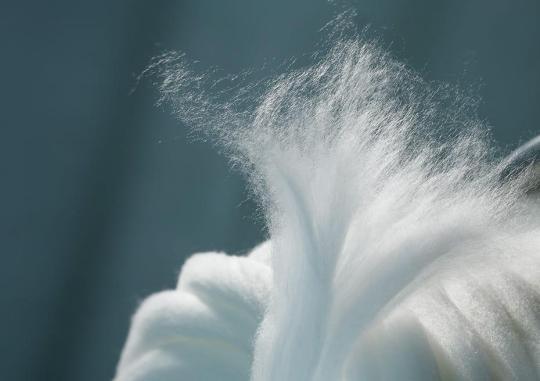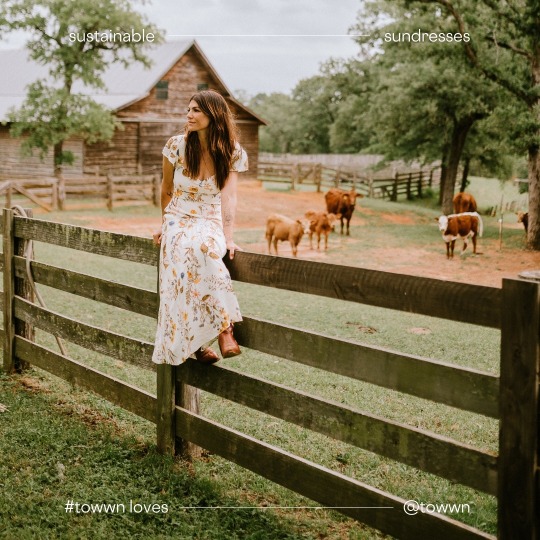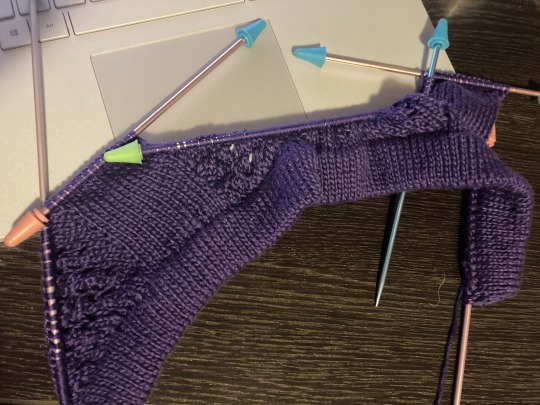#lyocell fiber
Text
Lyocell Fiber Market Size, Demand, Manufactures and Growth Analysis by 2028
Industry Overview of Lyocell Fiber Market:
Lyocell is a type of man-made fiber derived from the cellulose of bleached wood pulp. Popularly known as the third-generation cellulose fiber, lyocell was first developed in 1972 by the process of dry jet-wet spinning. Lyocell fibers are strong but soft, highly absorbent, wrinkle-resistant and capable of replicating an array of textures like leather,…

View On WordPress
#Demand for Lyocell Fiber#Global Lyocell Fiber Market#Lyocell Fiber#Lyocell Fiber Market#Lyocell Fiber Market Demand
0 notes
Text
“Bamboo is antifungal”
Because it’s rayon
“Eucalyptus fabric is cooling!”
Yeah, because it’s rayon
“We make clothing called seacell out of seaweed!”
Yeah I looked on your website it’s made by the lyocell process, which means-
-wait for it-
It’s fucking rayon!!
Listen. There is a list of actual plant fibers that are directly made into fabric: cotton, linen, ramie, some hemp. I’m sure I’m missing a couple.
But if you’re wondering “huh how did they turn that plant material into fabric,” 99% of the time? It’s RAYON.
All rayon is made by putting plant material in chemical soup, dissolving out everything but the cellulose, and turning the cellulose into filaments/fibers.
The source of the cellulose has zero effect on the eventual fabric.
Rayon made from bamboo or eucalyptus or seaweed is not any better than rayon from any other sources.
Don’t let companies mislead you!
#rayon#I’ve ranted about this before#I will die on this hill#it makes me so mad that the labeling laws have gotten lax on this#my posts#anyway got into an argument w someone on fb about it lol
14K notes
·
View notes
Text
how many different names for rayon can they possibly come up with???
0 notes
Text

towwn: hello sunshine 🌞! summer is in full swing, and there’s no better time to embrace the sundress. whether you casually slip it over a swimsuit or dress it up for a night out, shopping consciously is a chic way to do good by the planet + people who craft our clothes. swipe to find some of the prettiest ethical sundresses you’ll feel good – and look good! – wearing ‘til fall.
@current_air
we love the multiple chambray frocks made of 100% lyocell, which reduces water usage while utilizing regenerated natural fibers. the co. only partners with ethical factories and all packaging materials are recycled + biodegradable.
@pítusa.co
this ethical female-led brand employs female-operated ateliers in peru + india to craft its colorful, lightweight, beachy styles in small batches.
@sezane
renowned for its commitment to sustainability, this b corp + mission-led brand makes timeless dresses with organic cotton, recycled water & laser detailing for people who respect the planet.
@reformation
this eco-conscious fashion favorite uses sustainable materials like rescued deadstock, repurposed vintage fabric, silk + linen to craft gorgeous sundresses for all occasions.
@shopdoen
these pretty, feminine frocks showcase a range of floral, striped + ruffled designs that take a responsible approach to sourcing + manufacturing. quality raw materials and women-owned-and-run, ethical global factories highlight the brand's commitment to a positive impact while creating lovely dresses.
@cuyana
this latin american-founded, female-led brand reached 100% sustainability in 2022, and the celeb-fav has also pledged 100% carbon-neutral packaging by 2025.
@kotn
inspired by a cotton farm community in egypt, kotn prides itself on a sustainable supply chain + educational partnership with locals in the nile delta. a high-impact north american b corp voted “best for the world,” we love their classic + comfy egyptian cotton & tencel sundress designs.
@seasidetones
this collection of ethically crafted, sea-inspired dresses is handcrafted in poland + includes a maternity line. crafted with premium natural fibers, mainly pure baltic linen, the garments are durable and stay cool in the heat.
14 notes
·
View notes
Text
MATERIAL RESEARCH
Looking into regenerative/recycled/recyclable/environmentally-friendly materials.
Repreve: Recycled PET bottle fabric
“We transform plastic bottles into certifiable, traceable, high-performance yarn … REPREVE® is made with less carbon, using non-toxic products. It reduces global warming potential compared to conventional virgin polyester. We empower brands and consumers to take a positive step … Our collaboration with Oerlikon Barmag on the eAFK EvoCooler technology has reduced the energy required to texture our yarn. REPREVE® SmartDye™ and WaterWise™, both proprietary innovations, have reduced the amount of water and energy used in the dye process.” - https://repreve.com/discover-repreve
Econyl: Recycled fishing net and nylon fabric
“Fishing nets, together with other nylon waste, are regenerated into ECONYL® nylon. … As well as being a solution on waste, ECONYL® regenerated nylon is also better when it comes to climate change. It reduces the global warming impact of nylon by up to 90% compared with the material from oil.” Also recycled into the material: old carpets, pre-consumer waste, and textile scraps. - https://www.econyl.com/the-process/
Agraloop Biofibre: created from agriculture/food waste
“The Agraloop™ refines natural fibers derived from agricultural crops into textile-grade fiber called Agraloop™ BioFibre™. A NEW Natural Fibermindfully sourced for circularity. With our specialized wet processing technique, cellulose fiber from stems and leaves are purified into soft fiber bundles ready to spin into yarns. The Agraloop processes left-overs from various food and medicine crops including, oilseed hemp/flax, CBD hemp, banana, and pineapple.” - https://circularsystems.com/agraloop
Pinayarn: Fabric made from pineapple waste
“Piñayarn® by Ananas Anam is an innovative and low impact yarn, made from waste pineapple leaves. Piñayarn offers a 100% plant-based, recyclable, and biodegradable textile solution for a world otherwise dominated by petroleum-based textiles and resource intense virgin fibres.” - https://www.ananas-anam.com/pinayarn/
Recycled Cotton
“Recycled cotton can be generally defined as converting cotton fabric into cotton fiber that can be reused in textile products. Recycled cotton is also commonly referred to as regenerated cotton, reclaimed cotton, or shoddy. Recycled content includes recycled raw material, as well as used, reconditioned, and re-manufactured components.
Pre-consumer: includes scraps created by yarn and fabric by-products
Post-consumer: includes garments, upholstery, towels, household items to be repurposed
The largest volume of recycled cotton sources is produced through pre-consumer waste, such as cutting scraps. Post-consumer waste is more difficult to sort through due to various color shades, fabric blends, and it is generally a more labor-intensive process.” - https://cottonworks.com/en/topics/sustainability/cotton-sustainability/recycled-cotton/
Mylium: Mycelium-based leather
“At Mylium we treasure fungi that grow in a thread-like network, called mycelium. Mycelium grows by extending and branching its tips in search of nutrients. The threads hook strongly together and are pressed to form a uniform sheet.” -https://www.mylium.nl/technology/
Hemp fabric
“One of the most eco-friendly aspects of hemp is that it uses very little water, about 1/20th of the amount of water it takes to grow cotton and can often be rain-fed. Hemp can grow in almost all soil conditions, and unlike cotton (which depletes the soil of nutrients) hemp’s deep-reaching roots preserve the topsoil and subsoil. Hemp plants grow densely as well, leaving no room for weeds and competing plants and is less vulnerable to insects, which means little to no use of pesticides.” Hemp fabric is also biodegradable, and depending on where it is sourced from- largely produced by sustainable practices. - https://wearethefabricstore.com/au/sustainability/gots-organic-hemp
Lyocell and Modal: fibres made from sustainable wood
“TENCEL™ Lyocell and Modal fibers help to maintain the environmental balance by being integrated into nature’s cycle. The fibers originate from the renewable raw material wood, created by photosynthesis. The certified biobased fibers are manufactured using an environmentally responsible production process. The fibers are certified as [100%] compostable and biodegradable, and thus can fully revert back to nature.” - https://www.tencel.com/b2b/sustainability
An interesting article on the incredible role of mycelium and waste management...
2 notes
·
View notes
Text



started a new knitting project based off some pictures I found on an obscure russian website lol It’s made with a bunch of short rows to make the shaping for the yoke part. I might make a post with the pictures explaining it (but I don’t speak russian so it’s my best guess). I don’t know why my brain glomped onto this style of yoke shaping but here we are.
Pattern: something I’m making myself, I’ll let you know if it works out in the end lol
Yarn: K+C Pearl, it’s 70% lyocell and 30% viscose. I might be the outlier but I LOVE knitting with plant fibers !!!
5 notes
·
View notes
Photo

Cool, dry comfort all summer long ☀️ 🌱 TENCEL™ Lyocell cellulose fibers absorb moisture even more efficiently than cotton. This supports the body’s natural thermal regulating mechanism, keeping your skin feeling cool and dry throughout the day and night, and provides a less favorable environment for bacterial growth. 🌱 BOTANIC ORIGIN TENCEL™ Lyocell fibers are derived from sustainable wood sources – sustainably managed forests. 🌱 SUSTAINABLE PRODUCTION Fibers are extracted via an environmentally-friendly closed loop production process, which transforms wood pulp into cellulosic fibers with high resource efficiency. This solvent-spinning process recycles process water and reuses the bio-solvent at a recovery rate of more than 99%. 🌱 BIODEGRADABLE All TENCEL™ standard Lyocell fibers are biodegradable and compostable under industrial, home, soil, fresh water and marine conditions, meaning at end of garment life, they can fully revert back to nature. #TencelUnderwear #TencelLingerie #TencelPanties #TencelBra #SustainableLingerie #SustainableUnderwear #EthicallyMade #MadeInPortugal https://instagr.am/p/CvK2jBzMUoG/
2 notes
·
View notes
Text
i need to like. learn more things abt fibers bc like. why would you make a heavy twill out of a tencel blend when ime tencel/lyocell/rayon is like. it wants 2 be drapey and silky. like is that not just a textile with dysphoria.
#fashion person manqué#like you wouldn't know it from how i dress but like. it's a language so obvs i'm interested
4 notes
·
View notes
Link
Check out this listing I just added to my Poshmark closet: UGG Fuzz Sugar Slide Sandal NIB SZ 8.
0 notes
Text
0 notes
Link
Check out this listing I just added to my Poshmark closet: Hudson Nix Lace Up Skinny Crop Jeans.
0 notes
Text
Lyocell Fiber Market Report Analysis by Size, Share, Demand and Forecast 2023-2028
IMARC Group has recently released a new research study titled “Lyocell Fiber Market Report by Product (Staple Fiber, Cross Linked Fiber), Application (Apparel, Home Textiles, Medical and Hygiene, Automotive Filters, and Others), and Region 2023-2028”, offers a detailed analysis of the market drivers, segmentation, growth opportunities, trends and competitive landscape to understand the current…

View On WordPress
#Global Lyocell Fiber Market#Lyocell Fiber Market#Lyocell Fiber Market 2023#Lyocell Fiber Market Analysis#Lyocell Fiber Market Outlook#Lyocell Fiber Market Report
0 notes
Link
Check out this listing I just added to my Poshmark closet: Citizens Of Humanity Women’s Rib Tank Size XL One Shoulder Narida Stretch NEW.
0 notes
Link
Check out this listing I just added to my Poshmark closet: Madewell Leedra Button Front Midi Dress Size 12.
0 notes
Video
towwn: eco-friendly denim lines we love 👖🌎♻️
there are lots of benefits to eco denim—from reduced water waste and fewer harmful chemicals, to the use of sustainable dyes, fair labor practices and more high quality organic and recycled cotton. next time you’re in the market for new denim, consider one of these 4 brands doing better for both people + planet.*
👖@eticadenim prioritizes low-impact chemicals derived from plants + minerals in its production process. safe, alternative lightening agents are used to create multiple washes, and the denim is washed via e-flow technology—which saves 1000+ gallons of water in every load. overall, ética tracks+ reduces water usage by 90%, energy consumption by 63% & chemicals by 70% compared to industry standards.
👖@boyishjeans is committed to sustainable fabrics, such as tencel™ lyocell, organic cotton, recycled cotton + more grs-recycled fabrics. made with fewer chemicals, the brand uses natural plant-based dyes + reduced dystar indigo, reducing the toxic impact of synthetics + sulfates. boyish is vigilant about water safety, recycling h20 to keep chemicals out of local fresh-water sources.
👖@outerknown supports regenerative farming practices and chooses earth-friendly fibers with good circularity potential, like organic + recycled cotton, hemp + responsible wool. it works with 2 b-corp certified suppliers and runs 8 production facilities on renewable energy. workers’ well being is prioritized via high labor standards, extended health insurance, scholarships, housing support + more. it also launched outerworn, a resale platform for pre-loved styles, to keep clothes out of landfills.
👖@shopredone is best known for its innovative approach to upcycling vintage @levis, which gives them a new lease on life and reduces waste. utilizing existing fabrics, the brand saves on cotton production + water-intensive dyeing techniques. this approach helps minimize environmental impact while offering customers a unique pair of upcycled jeans..
(*as always, the most eco-friendly option is to shop secondhand whenever possible. ✌️)
18 notes
·
View notes
Link
Check out this listing I just added to my Poshmark closet: New JCREW Shrunken TENCEL Lyocell-Blend T-shirt Sweater Heather Dusk BX481.
0 notes